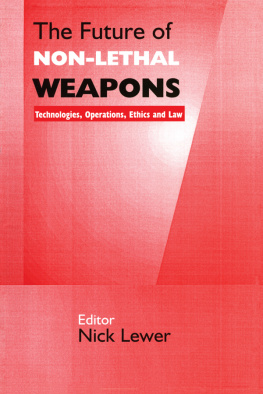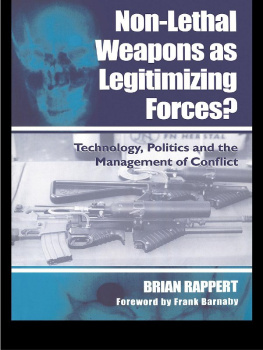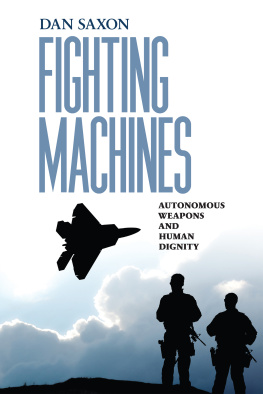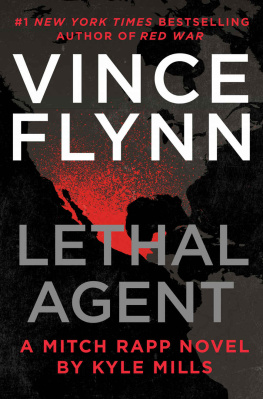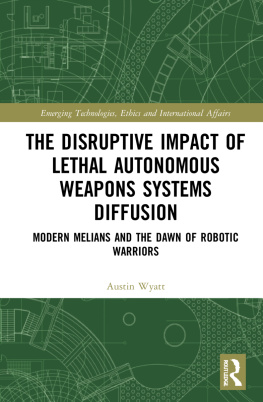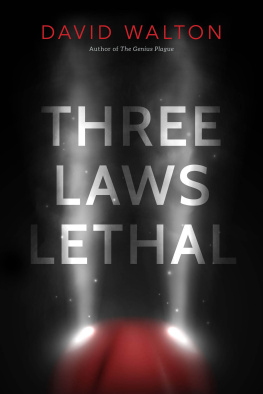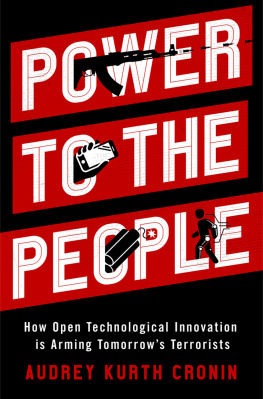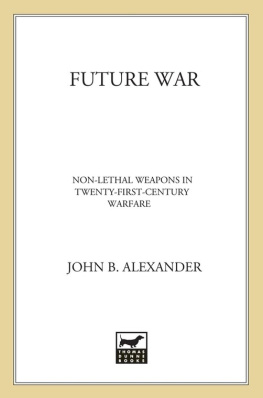First published in 2002 by
FRANK CASS PUBLISHERS
This edition published 2013 by Routledge
2 Park Square, Milton Park, Abingdon, Oxon OX14 4RN
711 Third Avenue, New York, NY 10017
Routledge is an imprint of the Taylor & Francis Group, an informa business
Copyright 2002 Frank Cass & Co. Ltd (collection); authors (chapters).
British Library Cataloguing in Publication Data
The future of non-lethal weapons: technologies,
operations, ethics and law
1. Nonlethal weapons
I. Lewer, Nick
355.82
ISBN 0-7146-5309-8 (cloth)
ISBN 0-7146-8265-9 (paper)
Library of Congress Cataloging-in-Publication Data
The future of non-lethal weapons: technologies, operations, ethics, and law /
editor, Nick Lewer.
p. cm.
Includes bibliographical references and index.
ISBN 0-7146-5309-8 (cloth) ISBN 0-7146-8265-9 (pbk.)
1. Nonlethal weapons. I. Lewer, Nick.
U795 .F88 2002
623.4-dc21 2002067437
The following chapters first appeared in Medicine, Conflict and Survival (ISSN 1362-3699), Vol. 17, No.3 (July-Sept. 2001): 1, 2, 4, 5, 6, 7, 8. Chapter 3 first appeared in Peace and Change (ISSN 0149-0508), Vol.26, No.l (2001) and chapter 9 in Defense Studies (ISSN 1470-2436), Vol.l, No.2 (2001).
All rights reserved. No part of this publication may be reproduced, stored in or introduced into a retrieval system, or transmitted, in any form or by any means, electronic, mechanical, photocopying, recording or otherwise without the prior written permission of the publishers of this book.
NICK LEWER
Interest in non-lethal weapons (NLWs), which have been defined as being explicitly designed and primarily employed to incapacitate personnel or material while minimising fatalities, permanent injury to personnel, and undesired damage to property and the environment
- Qualitative advances in non-lethal weapons technology, including dual-use technology applications in civilian/military operations;
- Debates concerning the revolution in military affairs,
- A need to find alternatives to lethal methods in peacekeeping operations;
- An increasing role for military forces in operations other than war (OOTW) and military operations in urban terrain (MOUT), including peacekeeping operations;
- Situations in which combatants and non-combatants are mixed together, sometimes deliberately;
- Increasing resistance by domestic constituencies to accept deaths in war operations;
- Debates surrounding inhumane types of NLWs, such as blinding laser weapons;
- Requests from civilian law enforcement agencies and prison services for non-lethal arrest and restraint techniques;
- The concept of being able to fight a bloodless and humane war;
- The presence of international media in war zones and civil disturbances recording the brutality of violent conflict and responses to it.
There is increasing evidence of the use of NLWs in combat and peacekeeping operations. For example, in Kosovo US Marines have fired multi-foam baton rounds, sponge grenades and multi-rubber balls. As one Marine officer reported, The bottom line is, despite some issues, the use of non-lethal impact munitions saved lives and kept KFOR [Kosovo Peacekeeping Force] soldiers from having to immediately resort to deadly force.
Emerging Technologies
First- and second-generation non-lethal weapons (which include rubber and plastic bullets, bean bags, electric-shock weapons, incapacitant gases, batons, laser weapons This section will review some of the emerging and developing technologies.
The Future of Non-Lethal Weapons
The majority of the articles contained in this book were first published in Medicine, Conflict and Survival [2001; 17 (3)]. They were developed from presentations at a conference in Edinburgh, December 2000, organized by the Bradford Non-Lethal Weapons Project, which brought together a small working group of international experts reflecting a variety of perspectives and approaches under the heading of The Future of Non-Lethal Weapons: Technologies, Operations, Ethics and Law. Three extra pieces have been added to the collection by Malcolm Dando (an original contribution), Victor Wallace [Defense Studies 2001; 1 (2)] and Brian Rappert [Peace and Change 2001; 26 (1)]. As the studies in this collection will show, whilst there are evident advantages linked with non-lethal weapons, there are also key areas of concern associated with the development and deployment of such weapons, including:

